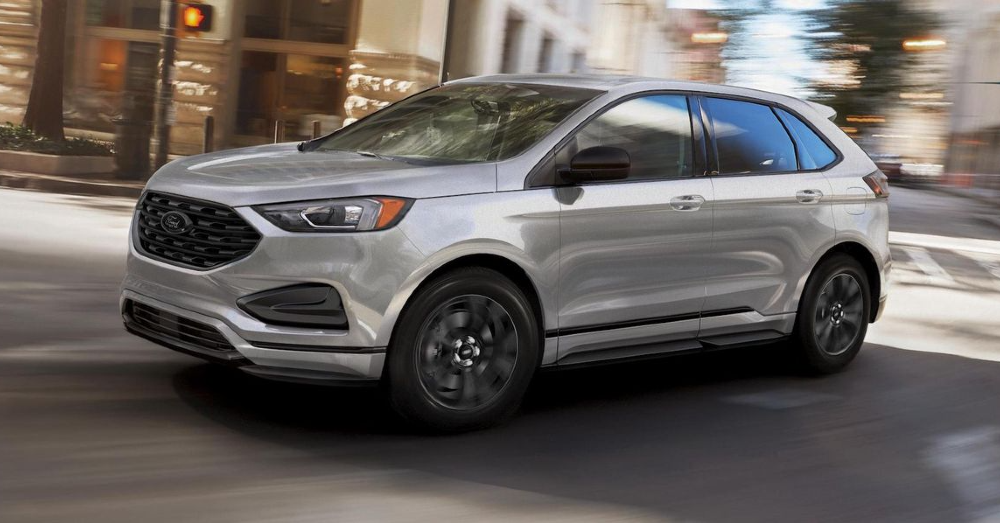The Ford Edge and other popular models will now have reduced autonomous parking functionality. Find out why the company nixed auto-park.
Not Enough Drivers Use the Features
Modern Ford vehicles, including the Ford Edge SUV, come with a range of autonomous parking
features designed to help drivers with challenging situations like parallel parking.
Based on the company’s Active Park Assist, they aim to reduce stress and enhance drivability. Now, the company will be phasing out some elements of its autonomous parking system.
What’s Behind the Decision to Nix Autonomous Parking?
According to Kumar Galhotra, Ford’s COO, the company decided to save money across the board since Ford Edge drivers aren’t putting the features to good use. Galhotra mentioned during a Bloomberg conference call that removing the relevant tech will save around $60 per vehicle.
While $60 per vehicle doesn’t sound like much, it adds up to around $10 million per year, or up to $2 billion when considering added freight and material costs involved with manufacturing and production. Ford has decided it’s worth the trade-off.
The decision isn’t about cutting corners to save money. Company decision-makers use connected vehicle data to evaluate consumer use of its advanced driver-assist technologies. In the case of autonomous parking, they found that drivers just aren’t using it.
What Ford’s Decision Contributes to the Wider Debate on Autonomous Vehicles
What’s interesting about Ford’s decision isn’t how much money it will save the company but what the driver data contributes to the general debate on autonomous vehicles. Some of that debate surrounds safety issues. However, that’s not the only important consideration.
The marketing hype surrounding autonomous driving systems makes it seem like they’re all must-have, life-changing features. In reality, many drivers find them challenging to use or generally inapplicable to their daily lives.
Ultimately, it doesn’t matter how great a feature sounds or whether it works as intended if drivers don’t use it. Ford has become one of the first modern automakers to disclose information about the current use of autonomous systems.
Ford could win over buyers by openly stating that their autonomous parking features aren’t seeing enough use to be worth the extra cost. The company could pass on savings to customers and frame the decision as responding to drivers’ true desires.
What Ford’s Decision Means for the Future of Vehicle Automation
Ford’s decision to ditch certain autonomous parking features on vehicles like the Ford Edge brings up wider questions. How many drivers find the move toward increased vehicle automation as appealing as modern vehicles’ marketing teams would have the public think?
Ideally, increased transparency about the popularity and use of vehicle automation systems could inform the immediate future of automotive manufacturing. If few drivers like or use the features, perhaps it’s better to eschew their release to save consumers money.
To be clear, the future of autonomous vehicles still looks bright. Fully self-driving cars are in development that could change the game for drivers by increasing safety, reducing traffic, and creating much more pleasant commutes.
The question is whether it makes sense to continue progressing toward the autonomous future in incremental steps. By shifting focus to longer-term goals and focusing on manufacturing quality vehicles like the Ford Edge with features that consumers want, automakers and drivers could have the best of both worlds.
This post may contain affiliate links. Meaning a commission is given should you decide to make a purchase through these links, at no cost to you. All products shown are researched and tested to give an accurate review for you.

